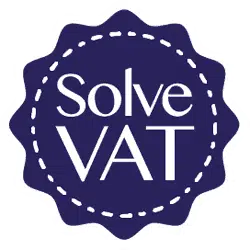VAT inspection or VAT Investigation
VAT inspection
In the bustling arena of modern commerce, adhering to the myriad tax regulations is not just a legal obligation, but a ticket to fostering trust and goodwill among stakeholders and authorities alike. Among the various taxes that businesses grapple with, Value Added Tax (VAT) holds a distinctive place, often being a subject of scrutiny by tax authorities. This brings us to the realm of VAT investigations, a process that can evoke a sense of dread among business owners. The complexity of inspections takes a new turn when conducted virtually by consultants, a practice that has burgeoned in recent times due to the digital leap propelled by global exigencies.
The transition to virtual platforms for consultations and investigations has indeed made the understanding of VAT inspection triggers a crucial aspect for businesses. This article aims to shed light on the top 10 most common triggers for a VAT investigation, with a keen focus on the novel domain of consultants’ virtual investigations. This exposition seeks to arm businesses with the requisite knowledge to traverse the VAT landscape with confidence, steering clear of the common pitfalls that could beckon unwanted scrutiny.
A VAT inspection can be undertaken by HMRC remotely or by way of a VAT visit. Our team of VAT specialists can assist you with any VAT problem which may arise as a consequence of a VAT inspection. What triggers a VAT inspection could include some of the following issues.
1. Discrepancies and Inconsistencies in VAT Returns
The journey into the common triggers begins with the discrepancies or inconsistencies that may arise in VAT returns. A mismatch or inaccurate representation between the declared output tax and input tax is a red flag that tax authorities find hard to ignore. Such inconsistencies can easily propel a VAT investigation, making it imperative for businesses to ensure accuracy and coherence in their VAT returns.
2. Late VAT Returns and Payments
A pattern of tardiness in submitting VAT returns or making payments is a conspicuous sign of mismanagement. Such habitual delays can catalyse an VAT inspection to discern whether the late submissions stem from poor administrative practices or deliberate oversight.
3. Anomalies in Industry-Specific VAT Trends
Every industry has a set of established VAT trends. When anomalies or deviations from these trends surface, they can ignite curiosity among tax authorities. A VAT inspection might be triggered to dig deeper into the reasons behind such deviations and ensure compliance with VAT regulations.
4. Living Beyond Means
The lifestyle of a business owner can sometimes be a window into the financial practices of a business. If a business owner’s lifestyle conspicuously exceeds the means of their declared income, it can pique the interest of tax authorities, possibly leading to a VAT investigation.
5. Significant Changes in VAT Claims
A sudden or significant alteration in VAT claims, particularly input tax claims, can act as a trigger. It’s prudent for businesses to maintain a consistent record or have plausible explanations for any stark changes in their VAT claims to help deal with any resulting VAT inspection.
6. Whistleblower Reports
Whistleblowers play a pivotal role in bringing financial discrepancies to light. Credible information from whistleblowers regarding VAT evasion can serve as a catalyst for a VAT investigation, underscoring the importance of maintaining a clean financial slate.
7. Annual accounts and Corporation Tax returns
A businesses Annual Accounts and Corporation Tax returns are available to HMRC. If this information is different to the VAT returns submitted, or you are not registered for VAT, this can result in an HMRC investigation into your VAT position in detail.
8. Comparison with Industry Benchmarks
Tax authorities often juxtapose a business’s VAT declarations with established industry benchmarks. Significant divergences from these benchmarks could beckon a VAT inspection or VAT investigation, making adherence to industry norms a wise practice.
9. Incomplete or Inadequate Records
The cornerstone of VAT compliance is the maintenance of complete and accurate records. Incomplete or inadequate records are an open invitation for a VAT inspection or VAT investigation, spotlighting the need for meticulous record-keeping.
10. Suspicious Activity or Transactions
Any activities or transactions that veer away from standard business practices and raise suspicions can attract the attention of tax authorities, paving the way for a VAT investigation.
The dawn of virtual consultations and investigations by consultants has infused a new layer of complexity in VAT compliance. As businesses strive to stay afloat and thrive in the ever-evolving commercial landscape, staying updated on common VAT investigation triggers is indispensable. By nurturing a culture of compliance and harnessing the expertise of seasoned VAT consultants, businesses can adeptly navigate the intricacies of VAT regulations. The synergy between informed compliance and expert guidance can ensure a smooth sail through the fiscal waters, keeping the spectre of VAT investigations at bay.
More information with regard to a VAT investigation can be found at https://www.solvevat.co.uk/vat-expertise/vat-investigation-and-vat-inspections/
More information with regard to a VAT visit or VAT inspections is provided by HMRC at https://www.gov.uk/vat-visits-inspections
